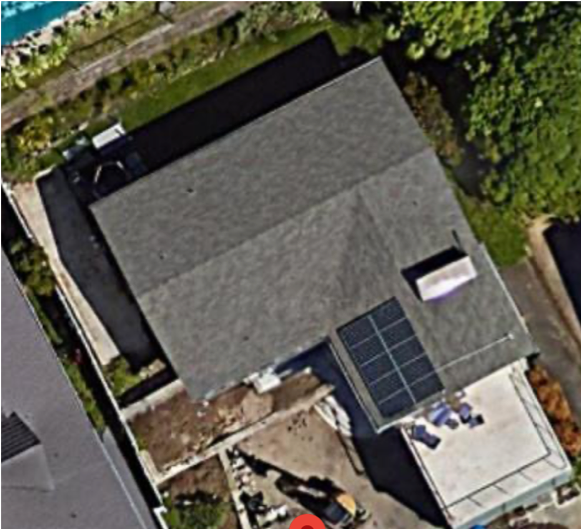BLOG POSTS ARE PRELIMINARY MATERIALS CIRCULATED TO STIMULATE DISCUSSION AND CRITICAL COMMENT. THE VIEWS EXPRESSED ARE THOSE OF THE INDIVIDUAL AUTHORS. WHILE BLOG POSTS BENEFIT FROM ACTIVE UHERO DISCUSSION, THEY HAVE NOT UNDERGONE FORMAL ACADEMIC PEER REVIEW.
By Michael Roberts
We need to transition away from fossil fuels quickly, and with inexpensive renewables and batteries, we can do so in a cost effective manner, so long as we employ a sensible plan and the right policies. But what are the tradeoffs involved with how we do it?
In most places, rooftop solar is considerably more expensive than utility-scale solar and wind. In the continental United States, it probably makes more sense to build large utility-scale solar projects in the deserts of California, Nevada, Arizona, and Utah (among other places), and wind on the Midwestern plains and perhaps off shores. A roughly 100 x 100 mile remote desert area could be covered with solar cheaply and power the whole continent. Despite substantial costs involved with transmission and storage, economies of scale in such projects are so dominant that rooftop solar makes little sense compared to grid-scale alternatives. And, given the way rooftop solar has been subsidized, it mainly benefits a rich few at the expense of many.
Here in Hawaii, however, the tradeoffs between grid-scale and rooftop solar are different. Land on our remote islands is more scarce and unique than on the continent. Oahu has six times the population density of California and sixty times that of Nevada. While we have enough vacant land (mostly former agricultural land) to power Oahu and the neighbor islands with solar and wind, we may prefer to use our scarce land in other ways, such as in food production or native habitat restoration. Rooftop solar can preserve these valuable land resources.
At the same time, utility-scale solar in Hawai’i is expensive to develop, two to three times mainland costs, while rooftop solar is more competitive with mainland pricing. And now, Tesla is offering rooftop solar, installed, for just $2 per watt (unsubsidized), the same low price as the mainland. Other solar companies are likely to drop prices in order to compete, if they haven’t already. At this low price, and especially with Federal subsidies, rooftop solar is fairly competitive with grid-scale solar, at least in Hawai’i.
How much power can we potentially generate from Oahu rooftops? Quite a lot, actually. Using google maps Matthias Fripp has estimated a potential rooftop solar capacity of about 4000 MW island wide, which is easily enough to power the whole island. But this would require filling all available rooftops with solar. Rooftops of single family homes would need to provide surplus energy to help power the hotels, office buildings, and apartment buildings in Waikiki and downtown Honolulu, which do not have enough rooftop space to self generate.
Unfortunately, most of those putting solar on their roofs install only enough to satisfy their own needs, because tariffs for residents with rooftop solar, generous as they are, do not normally compensate surplus generation provided to the grid. [1] As a result, only a small fraction of the available rooftop space gets used. Our home, for example, has about 1/6 of the rooftop covered with solar panels, and we’re pretty close to net zero. To make use of more rooftop space, home and building owners would need to be compensated for the power that they can supply to others.
It turns out that a mechanism to do this may already exist. It’s called Schedule Q. Schedule Q compensates small (< 100KW) generators at the avoided cost associated with electricity provided to the grid, a requirement under PURPA. [2] Right now this compensation is just 7.68 cents per kilowatt hour, but it varies month-to-month depending on oil prices, which are low today. This roughly amounts to the fuel costs saved by HECO when more electricity is fed into the system, mainly by generating less from its largest remaining power plants.
Is 7.68 cents per kilowatt hour enough to finance rooftop solar at $2 per watt? Discounting at today’s interest rates, such as a home equity line of credit at about 4%, the answer is yes. An approximate net-present value calculation is provided in the box. Add Federal and State subsidies, plus the fact that oil prices and avoided-cost compensation are projected to rise, and the rewards could be fairly substantial. Indeed, the returns appear substantial enough that the State subsidies seem hard to justify at this point. Most single-family rooftops could probably accommodate a system several times the assumed size, which would further increase home or business-owner returns.
Note that the calculation does not consider solar power installed for the household’s own consumption, because the return for that is considerably greater under other tariffs, and is clearly worthwhile to homeowners, if not for the system as a whole.

The value of installing rooftop solar and selling to HECO under Schedule Q.
Up front cost for 16.32 kW of rooftop solar at a price of $32,800.00
Annual revenue of 0.0768 x 16.32 x 5 hours per day at 365 days per year = $2,287.41
Present value of revenue over 25 years, 4% discount rate = $37,163.47
Annual monthly connection fee of $20 x 12 = $240
Present value of monthly connection fee over 25 years = $3,899.27
Federal tax credit: $8,528.00
State tax credits: $5,000*
Net Present Value: $37,163.47 – $32,800.00 – 3,899.27 = $464.20
$13,992 with tax credits.
* The state tax credit may be larger or smaller depending on whether and how the customer installs solar for its own electricity consumption, and possibly on other factors.
Under former net metering agreements, and even new solar tariffs that limit compensation for back feeding electricity, customers often save the retail price of electricity, which is typically over 30 cents per kilowatt hour, which far exceeds HECO’s avoided cost of 7.68 cents per kilowatt hour. Thus, most of the customers’ savings are not savings to society as a whole; mainly they just pass costs onto other customers.
The remarkable situation that we have come to now is that the all-in, leveled cost of new rooftop solar is comparable to the fuel costs alone from conventional generation that it would displace. This calculation does not include subsides or even count the unrecovered capital costs of Kahe and Waiau, the existing plants whose power would likely be displaced by new rooftop solar. Rooftop solar is even competitive with grid-scale solar purchased by HECO in recent competitive bidding processes, although it is a little difficult to make an apples-to-apples comparison since the recent purchases include batteries. Moreover, compensating rooftop solar under Schedule Q is unlikely to have a negative impact on other customers, as other rooftop solar tariffs do.
It is not clear to me that anyone is currently seeking credit for rooftop solar under Schedule Q. It is also unclear whether solar companies besides Tesla are offering prices low enough to make it worthwhile. If readers know of any examples, I would be interested in learning about them. While this channel for compensating rooftop solar will eventually pose some problems, as renewable penetration grows and avoided cost calculations become more complex (they would need to account for the time-varying value of energy), it might be an efficient way of accelerating renewable energy in the State. And it would do so in a way that saves scarce land resources for other purposes. Hopefully this channel or one similar to it, with appropriate adjustments over time, will enhance competition and help us make better use of rooftops for solar.
[1] Under grandfathered net-metering agreements, which are no longer available to new subscribers, homeowners receive a credit for surplus net generation in any given month that can be used in subsequent months, but any surplus remaining at the end of the year is forfeited. Under the current Customer Grid Supply tariff, customers receive a credit for electricity provided to the grid that equals roughly half the retail rate, but any surplus credit not applied to the bill in the current month is forfeited. Under other tariffs, back feeding any energy at all receives zero credit. Hawaii also has a Feed in Tariff program with very limited capacity that appears to have been fully subscribed as of 2011.
[2] PURPA is the Public Utilities Regulatory Policies Act. It is a Federal law established in 1978, revised and reinterpreted since, and requires avoided cost compensation for Qualified Facilities connecting to the grid to provide power. Schedule Q applies only to the smallest of such facilities.



